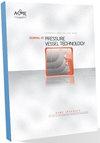Dissimilar Welding of Inconel Alloys with Austenitic Stainless-Steel: A Review
IF 1.4
4区 工程技术
Q4 ENGINEERING, MECHANICAL
Journal of Pressure Vessel Technology-Transactions of the Asme
Pub Date : 2022-08-24
DOI:10.1115/1.4055329
引用次数: 18
Abstract
In this review paper, dissimilar welding between Inconel and austenitic stainless steel along with its application has been outlined for high-temperature applications. The mechanical and microstructural behavior of this dissimilar joint has been summarized thoroughly in this article. Dissimilar welding of Inconel alloys and stainless steel (SS) has massive demand in high temperature and high corrosive applications industries. Austenitic stainless steel contains 16-26% of Cr and 6-12% of Ni elements showing FCC structures have good weldability and high corrosion resistance. Austenitic stainless steel such as 304, 316l, 304H, etc., containing austenite microstructure used in high-temperature applications like power plants, heat exchangers, heating elements, aircraft, and others. In addition, Ni-based Inconel alloys show high-temperature strength and corrosion resistance and are frequently used in high-temperature applications. Ni-based Inconel 718 alloy possesses excellent strength, corrosion resistance and creep resistance at high temperatures are frequently used in combustion chambers, power plants and turbine blades ap/plications. Inconel alloyed by elements Ti, Al and Nb attain strength by forming phases such as ?/-Ni3(-Ti, Al), ?//-Ni3Nb, and carbides such as MC and M23C6, nitrides, laves phase. The GTA dissimilar welding between expensive Inconel and cheaper stainless steel is successfully used in nuclear power plants. The dissimilarity in melting point, chemical composition, thermal, mechanical, and other properties between these materials make welding challengeable. This review paper focused on problems related to dissimilar welding like forming unmixed zone, elemental segregation, formation of laves phase, sensitization, microfissuring, and solidification cracking.铬镍铁合金与奥氏体不锈钢异种焊接研究进展
本文概述了铬镍铁合金与奥氏体不锈钢的异种焊接及其在高温应用中的应用。本文对这种异种接头的力学和微观结构行为进行了全面的总结。铬镍铁合金和不锈钢的异种焊接在高温和高腐蚀性应用行业有着巨大的需求。奥氏体不锈钢含有16-26%的Cr和6-12%的Ni元素,表明FCC结构具有良好的可焊性和高耐腐蚀性。奥氏体不锈钢,如304、316l、304H等,含有奥氏体微观结构,用于发电厂、热交换器、加热元件、飞机等高温应用。此外,镍基铬镍铁合金表现出高温强度和耐腐蚀性,经常用于高温应用。镍基铬镍铁合金718合金具有优异的强度、耐腐蚀性和高温蠕变性能,广泛应用于燃烧室、发电厂和涡轮叶片应用中。由元素Ti、Al和Nb合金化的铬镍铁合金通过形成诸如/-Ni3(-Ti,Al)//-Ni3Nb,以及碳化物如MC和M23C6,氮化物,laves相。昂贵的铬镍铁合金和廉价的不锈钢之间的GTA异种焊接已成功用于核电站。这些材料在熔点、化学成分、热性能、机械性能和其他性能方面的差异使焊接具有挑战性。本文着重讨论了异种焊接的相关问题,如形成未混合区、元素偏析、laves相的形成、敏化、微裂纹和凝固裂纹。
本文章由计算机程序翻译,如有差异,请以英文原文为准。
求助全文
约1分钟内获得全文
求助全文
来源期刊
CiteScore
2.10
自引率
10.00%
发文量
77
审稿时长
4.2 months
期刊介绍:
The Journal of Pressure Vessel Technology is the premier publication for the highest-quality research and interpretive reports on the design, analysis, materials, fabrication, construction, inspection, operation, and failure prevention of pressure vessels, piping, pipelines, power and heating boilers, heat exchangers, reaction vessels, pumps, valves, and other pressure and temperature-bearing components, as well as the nondestructive evaluation of critical components in mechanical engineering applications. Not only does the Journal cover all topics dealing with the design and analysis of pressure vessels, piping, and components, but it also contains discussions of their related codes and standards.
Applicable pressure technology areas of interest include: Dynamic and seismic analysis; Equipment qualification; Fabrication; Welding processes and integrity; Operation of vessels and piping; Fatigue and fracture prediction; Finite and boundary element methods; Fluid-structure interaction; High pressure engineering; Elevated temperature analysis and design; Inelastic analysis; Life extension; Lifeline earthquake engineering; PVP materials and their property databases; NDE; safety and reliability; Verification and qualification of software.

 求助内容:
求助内容: 应助结果提醒方式:
应助结果提醒方式:


